This article was reviewed on 01/31/24 by lactation consultant Olivia Hinge.
Breastfeeding is an incredible journey, but it's not always a straightforward one for mom and baby, particularly at first. Your body is marvelously adjusting to your baby's needs during this time. You're figuring out the most comfortable breastfeeding positions, and it's normal if your baby needs a bit of assistance to latch on correctly. These early days are a blend of challenges and triumphs, all integral to the bonding experience of breastfeeding.
But what about when you’re also facing unwelcome complications such as breast engorgement, clogged milk ducts, or, worse still, mastitis? These conditions are common in new moms, but they can make your breastfeeding journey that little bit more challenging — not to mention sore!
Engorgement, mastitis, and clogged ducts, while often painful and uncomfortable, usually aren't cause for major concern, though it's important to note that mastitis can occasionally develop into more serious complications like sepsis (though this is rare). These conditions can make feeding your little one more challenging than usual. Understanding these common breastfeeding-related issues is key, as their symptoms can be quite similar, making it tricky to distinguish one from another.
Let’s delve into these three conditions in more detail, exploring their most common causes, symptoms, treatments, and the key differences between them.
What is engorgement?
Breast engorgement is when milk and fluid build up in the breasts, causing them to become overly full and often resulting in pain, tightness and discomfort. Engorgement typically occurs around days 2-3 post-birth, coinciding with your milk 'coming in'. During this phase, your breasts become full of milk, triggering an inflammatory process. This results in fluid collection and swelling in the breast, coupled with increased blood flow, leading to more congestion. This internal swelling in the breast puts pressure on the milk ducts, essential for milk flow, causing a bottleneck effect. Consequently, there's a slowing down of milk release from the breast's milk-producing tissue, a key concern for many moms in the early days of breastfeeding.
If your baby is having difficulty latching or missing feeds, or they are breastfeeding less frequently because they’re weaning, you’re more likely to suffer from engorgement. Babies can find it difficult to latch if you have engorgement, as the nipple can become flat and stretched. This can also lead to further problems such as a decreased milk supply, sore or cracked nipples, or a clogged milk duct (more on that shortly).
Signs you might be suffering from engorgement include:
Pain or tenderness in your breasts
Your breasts feel uncomfortably full
The skin on your breasts or areola feeling tight or hard
If you know how to identify the symptoms of engorgement, you can address the condition quickly and avoid it triggering a clogged duct, which could then potentially develop into mastitis.
How to treat engorgement
Breast engorgement is not a serious condition, and in most cases, it will ease on its own as your baby gets used to breastfeeding and your milk supply syncs up with their demand. However, in situations where engorgement persists, it can lead to complications such as clogged ducts, decreased milk supply or sore, cracked nipples.
You can ease breast engorgement by trying one or more of the following methods:
Breastfeed or pump as you usually would. Though it may be tempting to add in additional feeding or pumping sessions, Avoid this as it could result in an oversupply which could prolong or worsen your symptoms.
Gently use lymphatic massage strokes towards your collarbone and armpit in the direction of your nipple as your baby is feeding.
Apply a cold compress to the breasts after feeding or pumping to reduce
inflammation.Take anti-inflammatory painkillers to help with the pain and help reduce the swelling.
Engorgement won’t usually require medical treatment, but if none of the above methods is effective and you’re concerned about lingering engorgement, speak to your doctor or a lactation consultant.
What is a clogged milk duct?
As the name suggests, a clogged or blocked duct occurs when a milk duct in your breast becomes obstructed, preventing breast milk from flowing to the nipple. It often causes a wedge-shaped, hard hot lump of tissue to appear on your breast, which may be accompanied by redness or swelling (though redness may not be visible on darker skin tones). The lump will also be painful or tender to the touch, while you may also notice milk bleb — small pimple-like blisters on your nipple.
Blocked ducts while breastfeeding stems from inflammation within the breast. This condition can be triggered by various factors including:
An oversupply of milk
Long gaps between feeds or pumping sessions
A baby who struggles with a proper latch, leading to insufficient breast drainage.
It is important to note that persistently clogged milk ducts, if not treated, can evolve into mastitis. It is key to address any changes in your milk supply and breast health as soon as possible to avoid worsening symptoms and further disruption to your breastfeeding journey.
The most common symptoms of a clogged milk duct include:
A wedge-shaped, hard hot lump of breast tissue which is painful or tender to the touch (the lump may move or become smaller after feeding or pumping)
Redness and inflammation around the lump (though redness may not be visible on darker skin tones).
Discomfort which subsides after feeding or pumping
Milk bleb (blisters) on the nipple
How to treat a clogged milk duct
Like engorgement, a clogged duct is not usually anything to worry about, and it will usually only take a couple of days to clear if you’re following the right advice. That said, it’s important to try to unclog a plugged duct as quickly as possible to avoid it turning into mastitis.
To reduce inflammation with a blocked milk duct, try one or more of the following at-home remedies:
Avoid overfeeding or pumping, carry on as you would usually feed your baby to avoid overproducing milk and remaining in the cycle.
Gently use lymphatic massage strokes towards your collarbone and armpit in the direction of your nipple as your baby is feeding.
Change breastfeeding positions so that the baby’s nose or chin points toward
the blocked duct.Be sure not to skip nursing sessions; if your baby does not want to feed at
their regular interval, pump instead.Wear loose-fitting clothing where possible, and avoid wearing underwired
bras.Take over-the-counter painkillers to help with the pain.
Clogged milk ducts are a common challenge among breastfeeding moms and do not usually require a medical appointment. However, if you’re unable to clear the blockage and If you’re worried that it might be turning to mastitis, consult your doctor or reach out to a lactation consultant.
What is mastitis?
Mastitis is a painful inflammation of the breast which can occasionally lead to a bacterial infection. It’s most commonly experienced by breastfeeding women and is estimated to affect 30% of breastfeeding people worldwide. Mastitis usually only affects one breast (but can sometimes affect both) and is typically characterized by pain, redness and swelling.
Sufferers of mastitis may also experience flu-like symptoms such as a fever, a high temperature, fatigue, and general aches and pains.
One cause of mastitis is hyperlactation (an oversupply of milk), so it can often occur following engorgement or a clogged milk duct — a clogged duct can cause milk to back up, for example, possibly leading to infection. It takes 24-48 hours to go from inflammatory mastitis to bacterial (which needs antibiotics.)
Most people who have mastitis experience symptoms such as:
A painful breast which is warm or tender to the touch
Redness (though this may not be visible on darker skin tones) and swelling in the breast
Flu-like symptoms, with a temperature of 101° F (38° C) or higher
How to treat mastitis
Unlike engorgement and plugged ducts, which typically require no medical treatment, a doctor may prescribe antibiotics to treat mastitis. While a small amount of the drug may be absorbed into your breast milk, this is very unlikely to harm your baby, so you can continue breastfeeding them as normal.
In addition to antibiotics, you can relieve the symptoms of mastitis through several at-home treatments:
Apply an ice pack or cold compress to the breast to reduce swelling (but do not apply any heat).
Continue to breastfeed as normal, but try to feed from the sore breast first.
Gently massage your breasts before or during a feed or pumping session.
Try the reverse pressure softening technique, which involves massaging fluid away from the nipple.
Wear loose-fitting clothes and a supportive bra that doesn’t put too much pressure on your breasts.
Rest and drink plenty of fluids, particularly if you have flu-like symptoms such as a high temperature and body aches.
Take over-the-counter painkillers to help with the pain.
A minimum 10-14 day course of antibiotics in addition to some of the above measures should be sufficient to clear up your mastitis. If it persists, you should book a follow-up appointment with your doctor.
How can you spot the difference?
Engorgement, clogged milk ducts and mastitis share some symptoms, and there’s often a crossover between the three as one can sometimes lead to another. However, that’s not always the case, and it’s usually pretty easy to tell whether you’re suffering from engorgement, a blocked milk duct, or mastitis.
For example, mastitis symptoms tend to be more severe than those associated with engorgement or plugged ducts, while mastitis may also be accompanied by a high temperature and a general feeling of malaise. A plugged duct usually causes a wedge-shaped, hard hot lump in the breast, whereas engorgement and mastitis typically affect a larger area.
Still struggling to tell the difference? Let’s delve a bit deeper into how to distinguish
between each condition.
Engorgement vs clogged duct
Engorgement and plugged ducts have similar symptoms — including breast soreness and pain or discomfort when feeding — so they’re often confused. Engorgement may even lead to a clogged duct if it goes untreated for too long.
However, these are different conditions, and there are a few ways to distinguish between the two:
With a clogged duct, pain and inflammation are confined to a hard hot wedge-shaped lump in the breast tissue, while engorgement typically affects a wider area.
The lump caused by a clogged duct will often be red, while engorgement is
less likely to cause redness on the skin of the breast. (Though with darker skin tones the redness may not be visible)With engorgement, the skin may look stretched and shiny.
A clogged duct may be accompanied by small white blisters (milk bleb) on the nipple; these are rarely experienced by women suffering from engorgement.
While engorgement can come on fairly quickly and impact both breasts, a clogged duct usually develops more gradually and it will typically affect only one breast.
Does engorgement cause clogged milk ducts?
If engorgement persists, it can lead to your milk ducts becoming clogged, which may eventually lead to mastitis. If you know how to identify the symptoms of engorgement, however (such as breast hardness or a forceful letdown during feeding), you can address the condition quickly and avoid it triggering a plugged
duct.
Mastitis vs clogged duct
While mastitis and plugged ducts are different conditions, they’re closely related: in fact, a clogged duct can often be responsible for a mom developing mastitis.
So, do you have a clogged milk duct, or has it developed into full-blown mastitis? Here are a few ways you can tell the difference:
A clogged duct will cause a wedge-shaped hard hot lump to appear on the breast, while mastitis normally affects a larger area of the breast.
With a clogged duct, the pain and tenderness are generally confined to the immediate area around the lump, whereas mastitis usually causes pain in the whole breast.
Though both can cause pain, redness and swelling, these symptoms will typically be far more intense if you’re suffering from mastitis.
Pain or discomfort may subside after feeding or pumping if you have a clogged duct, while this is unlikely to provide any relief if you have mastitis.
Mastitis may be accompanied by flu-like symptoms such as tiredness and fever, whereas a clogged duct will not make you feel unwell
If you suspect you have a clogged milk duct it is key to address it early on - as a persistent blocked duct can sometimes evolve into inflammatory mastitis, which can then become bacterial mastitis.
How quickly can a clogged duct turn into mastitis?
If a clogged milk duct is not cleared, it can lead to mastitis quickly. It can take from 24 hours to 48 hours to become a bacterial mastitis. By identifying and treating a plugged duct quickly, however, you can avoid it turning into mastitis.
Engorgement vs mastitis
Engorgement and mastitis also have similar symptoms, though the latter is often more severe. Not addressing engorgement early on can lead to a blocked duct - which can then lead to the more serious bacterial mastitis.
How can you tell the difference between breast engorgement and mastitis?
Here are a few pointers to understand the key differences in symptoms for engorgement and mastitis:
Engorged breasts will normally feel tight or hard, while mastitis is more often
characterized by inflammation.Like a clogged duct, breast engorgement will not always make you feel generally
unwell; mastitis, on the other hand, may introduce flu-like symptoms.
Does engorgement always lead to mastitis?
Breast engorgement will not always lead to mastitis, but if it persists untreated it may cause a blocked duct and eventually develop into mastitis. It’s important to recognize the symptoms of engorgement early and know how to treat it, so you can avoid it leading to anything more serious.
Knowing the difference between common breastfeeding-related conditions such as engorgement, mastitis and clogged milk ducts is essential for a new mom, as it’ll help you recognize the signs early and address them quickly — enabling you to resume your breastfeeding journey without pain or discomfort (because no new mom should have to live with that!).
References
Cleveland Clinic. Breastfeeding Latch [Internet]. [cited 2024 Feb 1]. Available from: https://my.clevelandclinic.org/health/articles/breastfeeding-latch
Cleveland Clinic. Sepsis [Internet]. [cited 2024 Feb 1]. Available from: https://my.clevelandclinic.org/health/diseases/12361-sepsis
Cleveland Clinic. Breast Engorgement [Internet]. [cited 2024 Feb 1]. Available from: https://my.clevelandclinic.org/health/symptoms/24306-breast-engorgement
Cleveland Clinic. Analgesics [Internet]. [cited 2024 Feb 1]. Available from: https://my.clevelandclinic.org/health/drugs/21483-analgesics
Cleveland Clinic. Lactation Consultant [Internet]. [cited 2024 Feb 1]. Available from: https://my.clevelandclinic.org/health/articles/22106-lactation-consultant
Cleveland Clinic. Clogged Milk Duct [Internet]. [cited 2024 Feb 1]. Available from: https://my.clevelandclinic.org/health/diseases/24239-clogged-milk-duct
Cleveland Clinic. Milk Bleb [Internet]. [cited 2024 Feb 1]. Available from: https://my.clevelandclinic.org/health/diseases/24166-milk-bleb
Cleveland Clinic. Lymphatic Drainage Massage [Internet]. [cited 2024 Feb 1]. Available from: https://my.clevelandclinic.org/health/treatments/21768-lymphatic-drainage-massage
Cleveland Clinic. Mastitis [Internet]. [cited 2024 Feb 1]. Available from: https://my.clevelandclinic.org/health/diseases/15613-mastitis
Mayo Clinic. Hyperlactation [Internet]. [cited 2024 Feb 1]. Available from: https://www.mayoclinic.org/healthy-lifestyle/infant-and-toddler-health/expert-answers/hyperlactation/faq-20453399
Cleveland Clinic. Antibiotics [Internet]. [cited 2024 Feb 1]. Available from: https://my.clevelandclinic.org/health/treatments/16386-antibiotics
Emedexpert. Mastitis [Internet]. [cited 2024 Feb 1]. Available from: https://www.emedexpert.com/conditions/mastitis.shtml
Milkology. Reverse Pressure Softening [Internet]. [cited 2024 Feb 1]. Available from: https://milkology.org/content/reverse-pressure-softening


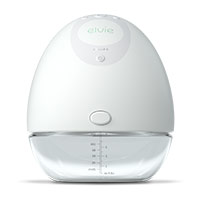
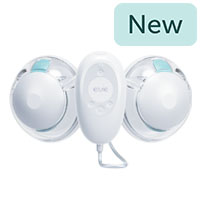
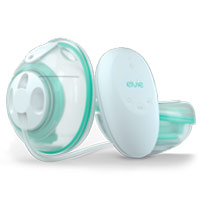
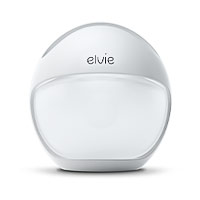
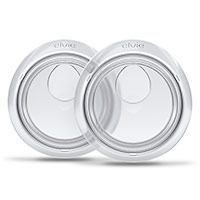
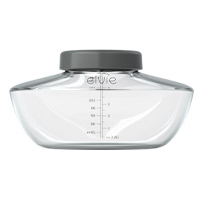
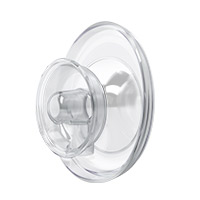

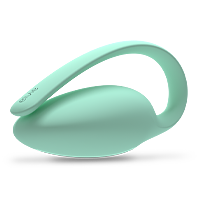
 13 minute read
13 minute read